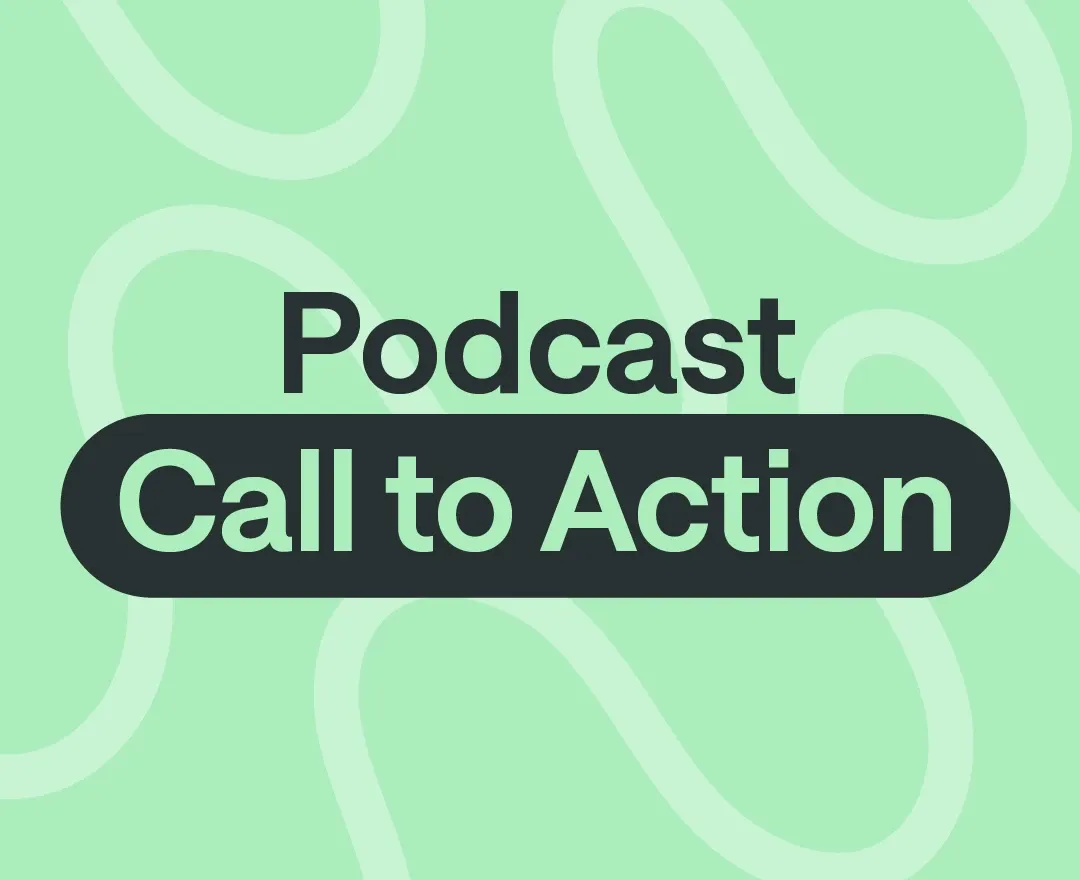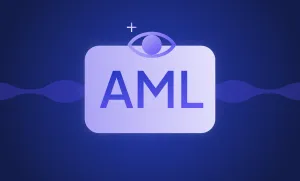Podcasts are one of the best media outlets for effective calls to action.
In the modern world, some podcasts are still produced in the original audio-only format, while many provide the video version as well. It means more captivating content for the viewer but also a big leap in production, in both the costs and overall scale.
Both methods include hosting exclusive guests, preparing content, recording, broadcasting, producing, uploading, promoting, and more. All these different aspects must come together for it to work, while each requires a high level of experience and mastery.
The great thing is that a podcast can be an educational, entertaining, insightful, and inspirational experience all at once. And it provides the best opportunity to spur your audience into action.
Here are the best practices for your calls to action (CTAs) that you should know and use.
What is a podcast call to action?
A podcast call to action (CTA) is any time you ask your listeners to take action. It could be following your show, sharing the episode on social media, visiting your website, checking a sponsor’s product, etc.
One of the primary goals for CTAs is monetization. But you can call your audiences to action for many reasons, like interacting with your brand, helping a charity, supporting a goal, sharing information, and more.
What is an example of a podcast CTA?
The CTAs are primarily oratory in podcasting. The host will usually:
- -- Invite the audience to action
-- Instruct on how to do it
-- Inform them about the reasons and benefits of doing so
A good example could go something like this:
“Our podcast is supporting the local charity today. If any of our listeners are interested in donating funds, you can do so through the link at the top of the description of this episode. It will lead you to a page where you can select the method suited for you and follow the instructions further.
Also, we will donate half of all the proceeds from this week’s episode, so please like, share, and subscribe if you haven’t yet and are inclined to do so.“
In a video-format podcast, sometimes the host points at a button or a link that pops up at that moment and leads to the announced cause. The CTA appears right where the host is pointing on the screen. This can be done in post-production but also during live broadcasts.
Besides clicking on a link, you can also instruct the audience to scan a QR code that appears on the screen or is in the episode’s notes.
There are numerous rules and practices for creating a good podcast CTA. Professional hosts may disagree on some, but there are a few rules that all follow to ensure success.
Best practices for an effective podcast call to action
To make the most of your podcast call to action, let’s look at five best practices to follow regarding the format, frequency, placement, accessibility, and originality of your CTAs.
Format
When phrasing your CTAs, you should only say the most relevant words. Be as clear, concise, and relevant as you possibly can.
Action-oriented words are not always necessary. For example, after presenting the sponsor, it’s enough to say:
“They offer a 30% discount for our viewers through the link below this video.”
This depends on the content relevance and your podcast format, so sometimes longer forms and concrete action-oriented words are necessary.
Your CTA format can also change depending on repetition.
Frequency
While there is no definitive answer, CTA quality is more important than quantity.
Most average-length podcasts, which are between 20 and 45 minutes, have two calls - one CTA to inform and the second one to reinforce.
However, some argue that only one CTA is the best way to go, popularly called the “one-shot rule.”
When tailoring this to fit your podcast, consider the following:
- -- Podcast length – longer forms offer more strategic spots
-- CTA mix – if there are several actions you’d like people to take, make sure to change up and spread out your CTAs
-- Theme of your show – depending on your content, always look for a natural break or a theme transition to feature your CTA
-- Audience response monitoring – follow the conversion rate metrics and consider the data to improve your CTAs
Placement
Generally speaking, every podcast should start with a CTA. It’s the best place because it has the highest listener count, their attention is high, and people will likely stick through it before your content begins.
Other good places include:
- -- Middle of the episode – this is a good place for a natural break that you can use to insert your message
-- Chapters – CTAs can be used to fill in transitions between different parts and segments of the show
-- At the end – you can use your CTA as your closing statement for the episode to a strong effect
Accessibility
Keep the CTA goal clear and easily achievable.
Consider people with disabilities. You can provide transcripts for people with impaired hearing. If you also provide the video, subtitles will help a wide range of people with disabilities.
If you have audiences that speak a different language, consider providing translations.
You can use various translation tools and make your show multilingual, which will ensure your audience understands your CTAs wherever they’re tuning in from. For video podcasts, you can offer subtitles in various languages, and for audio only, you can use AI-narrated translation.
Your goal should be to offer multiple options for achieving the CTA but do not overdo it.
To make your CTAs more accessible, consider using the following:
- -- Articulate speech
-- Captioning
-- High color contrast
-- Readable fonts
-- Transcripts and alternative formats
-- Different input methods
-- Offer additional notes
To ensure you’re doing all you can to make your podcasts and website more accessible, follow the ADA guide on web accessibility.
If possible, you should also try to get direct feedback from the people with disabilities in your audience.
Originality
Consider developing a unique method of conveying your call to action, like using a specific sound or a jingle. A practiced routine can also come in handy, like a practiced speech adapted to different situations.
Video podcasts provide more options for you, as visual CTAs offer a lot of room for creativity. Besides the general rules for the format, you have complete freedom to set the tone of your CTA - just make sure it’s in line with your brand identity.
What is a strong call to action?
A strong call to action is built on the relationship between you and your audience. It’s a mutually beneficial journey for you and the listener.
When you ask people to do something with a CTA, it’s because you want them to help you or your production in some way. But, if what you’re offering is fun or useful, people are more likely to want to help you because they’ll get something in return.
Here’s an example from The Tim Ferriss Show – one of the leading productivity podcasts. Tim revealed that since his listeners look up to him to find new products, they prefer the sponsored version of his podcast. Plus, more than 1.5 million people signed up for his weekly newsletter, which he promoted in a CTA at the end of each episode. When listeners already get a lot of value upfront, it’s easier to ask them to do something in return.
Source
People want to contribute ideas they believe in. They want to be a part of the community or a movement. So, presenting your CTA as a joint effort will go a long way.
Generally, a strong call to action should be:
- -- Clear and easy to do
-- Relevant to your content
-- Focused on the benefits for the audience
-- Engaging and personal when possible
-- Incorporating urgency
-- Repeated at least once
Follow this format, and make sure to mix visual and spoken CTAs.
If your CTA is successful, this leads to an interaction that generates a lead. This can be plugged into your CRM tool to guide your prospects through your funnel toward conversion.
How long is a call to action?
The most common podcast CTA duration is 15 to 30 seconds. Brevity is crucial for a multitude of reasons, one of them being audience retention.
It can vary depending on the context, repetition, simplicity, and length of the episode. That said, a short, clear, and engaging call to action is usually the most effective way to go.
Experimenting is also necessary as you monitor your audience response metrics and feedback.
Create your podcast CTA
A good CTA is a bridge between the podcast and the listener, inspiring action on both sides. Building a community with your audience is essential to taking that journey together and making an impact.
When you start recording next time, remember that your voice should be the voice of the many but also resonate with the individual. Be honest and speak from the heart, and people will hear and follow your CTAs.
Author bio:
|
|
Radostin Anastasov is a Content Specialist at SE Ranking. He has acquired his marketing and PR experience across various industries, such as AI, finance, and communications. When he’s not busy writing, he plays basketball to rock music. |








